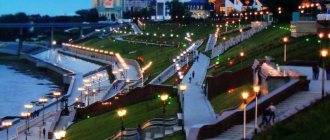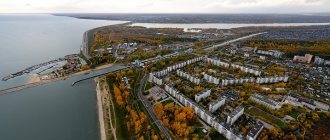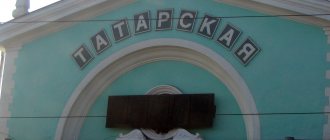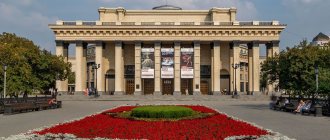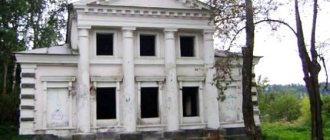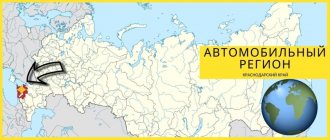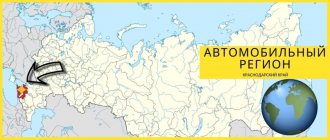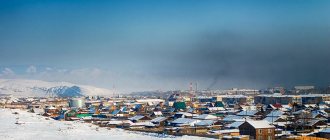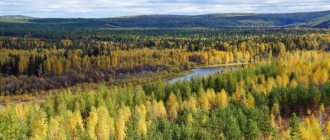Kuibyshev
(Novosibirsk region)
OKATO code:
50415
Founded:
1772
City since:
1782 City of district subordination (Kuibyshevsky district of the Novosibirsk region)
Center:
Kuibyshevsky district
The city was formerly called:
| Kainsk | 1782 | 1935 |
| Telephone code (reference phone) | |
| 38362***** | 21-2-30 |
Deviation from Moscow time, hours:
4
Geographical latitude:
55°27′
Geographical longitude:
78°18′
Altitude above sea level, meters:
110 Sunrise and sunset times in the city of Kuibyshev
Suburbs are growing faster than cities
In the period between the 2002 and 2010 censuses, when the population of the Novosibirsk region fell by 1%, the following territorial and demographic processes can be safely identified:
1. The Novosibirsk agglomeration is taking shape in the region, determined both by the formation of a zone of continuous development of populated areas and by existing communications. The agglomeration extends from its core in petals in six directions, coinciding with highways (Horda and Kolyvan directions) or with highways and railways (western, eastern, Kuznetsk, southern directions).
2. In the Novosibirsk region, suburbanization is beginning to clearly manifest itself, when the population of suburbs (both satellite cities and rural areas) is growing faster than the population of urban cores. In the case of the Novosibirsk agglomeration, it looks like this: Novosibirsk, Ob, Krasnoobsk and most village councils of the Novosibirsk region - up to +10%, Berdsk, Tolmachevo, Krivodanovka, Kamenka, Kudryashi, Novolugovoe and Barlak - +10+25%, Mochishche and Koltsovo - up to +30%, and the population of Razdolnensky and Michurinsky village councils of the Novosibirsk region has grown by 60% over these eight years.
In the Kuibyshev-Barabinsk agglomeration the situation turned out to be even more interesting. While the population of both cities fell by 6–7%, the number of residents of some suburban village councils increased by 2–3%. A similar phenomenon can be seen in the Karasuk region.
3. Outside the Novosibirsk agglomeration, almost the entire territory of the region is experiencing significant depopulation and migration outflow. But unlike the previous period, the rate of population decline is higher in rural areas. In the vast majority of regions, the rate of population decline in village councils remote from regional centers and highways is on average three times higher than in regional centers.
4. The highest rate of population decline is in the Vasyugan zone, where all village councils in the north of the Kolyvan, Chulym and Ubinsk regions lost during this period from a quarter to a half of the population that had already decreased in the 90s. And the north of the Kyshtovsky district - even more than half of all people. The only exception is the North, where investments related to oil production date back to this period.
In the Barabinskaya zone and the Kulundinskaya zones, a very clear division is emerging - all regional centers have steadily lost up to 10% of the population, most of the rural areas - up to a quarter of the population, and municipalities remote from the highways - sometimes up to half in just this less than a decade. However, in general, the scale of the decline in the rural population in Baraba for each group of municipalities is on average approximately 1.5 times higher than in Kulunda.
Map
| Kuibyshev: maps |
Kuibyshev: photo from space (Google Maps) Kuibyshev: photo from space (Microsoft Virtual Earth)
| Kuibyshev. Nearest cities. Distances in km. on the map (in brackets along roads) + direction. Using the hyperlink in the distance , you can get the route (information courtesy of the AutoTransInfo website) | |||
| 1 | Barabinsk | 11 (10) | YU |
| 2 | Zdvinsk | 86 (96) | YU |
| 3 | Ubinskoe | 89 (102) | IN |
| 4 | Vats | 98 (173) | Z |
| 5 | Northern | 99 () | WITH |
| 6 | Vengerovo | 100 (125) | Z |
| 7 | Kargath | 128 (150) | IN |
| 8 | Chistoozernoe | 136 (242) | SW |
| 9 | Kupino | 136 (313) | SW |
| 10 | Satisfied | 137 (253) | SE |
| 11 | Tatarsk | 149 (162) | Z |
| 12 | Bagan | 155 (351) | YU |
| 13 | Kyshtovka | 161 (238) | NW |
| 14 | Ust-Tarka | 164 (193) | Z |
a brief description of
Located on the Barabinskaya lowland, on the banks of the river. Om (tributary of the Irtysh), 315 km west of Novosibirsk.
Railway station, road junction.
Kuibyshev is a developed industrial center of the Baraba Lowland, which is facilitated by its location on the Om River and its connection with the Trans-Siberian Railway. highway.
Territory (sq. km): 110
Information about the city of Kuibyshev on the Russian Wikipedia site
Historical sketch
Founded in 1722 as a military fortification of Kainsky Pass to protect the Baraba residents from the Kalmyks and Kyrgyz. The settlement of Kain, which arose near the fortification (kain translated from Tatar means “birch”), was moved to the site of the current city in 1772.
Since 1782, the district town of Kainsk, Tomsk region, Tobolsk governorship (since 1796 - Tobolsk province). Since 1804 - a district town of the Tomsk province. Located on the Siberian Highway, it was a busy trading post.
In 1856, in the district town of Kainsk, Tomsk province, there were 2 churches, 383 houses, 28 shops.
With the construction of the Trans-Siberian Railway, which ran 13 km to the south, the importance of Kainsk dropped noticeably. At the end of the 19th century. in Kainsk there were 5 stone and about 900 wooden houses, there was a women's gymnasium and a parish school.
In 1935, Kainsk was renamed in honor of the revolutionary figure V.V. Kuibyshev (1888-1935), who in 1907-09. was here in exile.
Municipal indicators
| Index | 2001 |
| Demography | |
| Number of births, per 1000 population | 8.9 |
| Number of deaths, per 1000 population | 13.1 |
| Natural increase (decrease), per 1000 population | -4.2 |
| Standard of living of the population and social sphere | |
| Average monthly nominal accrued wages, rub. | 1765.5 |
| Average housing area per inhabitant (at the end of the year), sq.m. | 23.9 |
| Number of preschool institutions, pcs. | 14 |
| Number of children in preschool institutions, thousand people | 1.754 |
| Number of daytime educational institutions (at the beginning of the school year), pcs. | 14 |
| Number of students in daytime educational institutions, thousand people | 6.394 |
| Number of doctors, people. | 208 |
| Number of nursing staff, people. | 747 |
| Number of hospital institutions, pcs. | 6 |
| Number of hospital beds, thousand units | 0.845 |
| Number of medical outpatient clinics, pcs. | 8 |
| Capacity of medical outpatient clinics, visits per shift, thousand units. | 0.803 |
| Economy, industry | |
| Number of enterprises and organizations (at the end of the year), pcs. | 2210 |
| Construction | |
| Volume of work performed by type of activity “Construction” (until 2004 - volume of work performed under construction contracts), million rubles. | 59.5 |
| Commissioning of residential buildings, thousand sq.m. of total area | 10.4 |
| Commissioning of residential buildings, apartments | 155 |
| Commissioning of preschool institutions, places | 0 |
| Commissioning of educational institutions, places | 0 |
| Commissioning of hospital facilities, beds | 0 |
| Commissioning of outpatient clinics, visits per shift | 0 |
| Transport | |
| Number of bus routes (in intracity traffic), pcs. | 11 |
| Number of passengers transported by buses per year (in intracity traffic), million people. | 10.976 |
| Connection | |
| Number of residential telephone sets of the city public telephone network, thousand units. | 7.4 |
| Trade and services to the population | |
| Retail trade turnover (in actual prices), million rubles. | 686.3 |
| Retail trade turnover (in actual prices), per capita, rub. | 13576.8 |
| Public catering turnover (in actual prices), million rubles. | 22.6 |
| Volume of paid services to the population (in actual prices), million rubles. | 135.7 |
| Volume of paid services to the population (in actual prices), per capita, rub. | 2484 |
| Volume of household services to the population (in actual prices), million rubles. | 20.4 |
| Volume of household services to the population (in actual prices), per capita, rub. | 373 |
| Investments | |
| Investments in fixed assets (in actual prices), million rubles. | 43.1 |
| Share of investments in fixed assets financed from budgetary funds in the total volume of investments, % | 40.7 |
Data sources:
- Regions of Russia. Main characteristics of the constituent entities of the Russian Federation: statistical collection. Goskomstat of Russia. - M:, 2003.
Economy
Factories: chemical, aircraft parts, reinforced concrete products and structures. Combines: milk-canning and meat. Factories: clothing and art products.
Barabinskaya GRES.
In the Kuibyshev region, wheat, rye, barley, oats, corn, sunflower, rapeseed, and camelina are grown. Meat and dairy farming.
Clay deposit.
Main enterprises
CHEMICAL INDUSTRY
FSUE "Kuibyshev Chemical Plant"
632350, Novosibirsk region, Kuibyshevsky district, Kuibyshev, st.
Sadovaya, 3 Offers:
hydrogen peroxide, ammonium chloride, household chemicals, synthetic detergents
LIQUOR AND VODKA INDUSTRY
JSC "KAOLVI"
632350, Novosibirsk region, Kuibyshevsky district, Kuibyshev, st.
Shishkova, 2 Offers:
Vodka, liquor, mineral water, soft drinks
Culture, science, education
Branch of Novosibirsk Pedagogical University.
Museum of Local Lore and House-Museum of V.V. Kuibysheva.
Universities of the city
Kuibyshev branch of the Novosibirsk State Pedagogical University
632387, Novosibirsk region, Kuibyshevsky district, Kuibyshev, st. Molodezhnaya, 7
Kuibyshev branch of Novosibirsk State Technical University
632386, Novosibirsk region, Kuibyshevsky district, Kuibyshev, Kainskaya st., 78
Museums, galleries, exhibition halls
State Memorial House-Museum of V.V. Kuibyshev 632350, Novosibirsk region, Kuibyshevsky district, Kuibyshev, st.
Lenina, 2 Kuibyshev Museum of Local Lore 632380, Novosibirsk region, Kuibyshevsky district, Kuibyshev, st. Kuibysheva, 10
Architecture, sights
Church of John the Baptist (1906), former house of Volkov (1884), etc.
| Population by year (thousands of inhabitants) | |||||||
| 1856 | 2.7 | 1986 | 50 | 2005 | 48.5 | 2014 | 44.5 |
| 1897 | 5.9 | 1989 | 51.2 | 2006 | 48.5 | 2015 | 44.6 |
| 1931 | 9.2 | 1992 | 51.6 | 2007 | 48.2 | 2016 | 44.6 |
| 1939 | 12.9 | 1996 | 51.8 | 2008 | 48.0 | 2017 | 44.2 |
| 1959 | 30.4 | 1998 | 51.7 | 2010 | 47.3 | 2018 | 44.2 |
| 1967 | 40 | 2000 | 51.3 | 2011 | 45.3 | 2019 | 43.8 |
| 1970 | 40.2 | 2001 | 50.7 | 2012 | 44.8 | 2020 | 43.5 |
| 1979 | 46.5 | 2003 | 48.8 | 2013 | 44.6 | 2021 | 43.2 |
Information for the opposition
The worst situation is with statistics. There have never been statistics in Russia independent of the executive branch. But in recent years the situation has become completely deplorable. I really hope that the set of problems of statistical adequacy that have come to the fore due to the pandemic will really draw attention to these problems. If only because in addition to demographic statistics, there are also economic and social statistics. And demographics don’t end with mortality rates.
The picture of the Russian economy and Russian society in comparable and measurable terms remains very vague. And that is why all forecasts that predict not a trend, but the degree of change in specific indicators, remain nothing more than projection, manipulation and visionary work.
Until there are fundamental changes in the model of governing the country and in the principles of decision-making, the only way out of this situation is the formation of a huge number of layers of the shadow state. This is the criminal world, the highest form of organization of which is organized crime, fused with state power. That is the mafia. This includes small and medium-sized businesses that have massively fallen into the tax shadow. This is the so-called “garage economy”, which every year forms an increasing share of jobs that are important precisely from the point of view of employment, and not from the point of view of the production of surplus product.
This includes the civil society of large cities, which not only plugs holes in the social sphere, but also takes on the function of identifying problems at the grassroots level. First of all, in the most mobile and closest to the body of society spheres of the urban environment, ecology, public transport, and municipal government.
The most important thing in this situation is the synthesis and primary analysis of the information necessary for making any decisions. In general, no matter how trivial it may sound, the most important problem is information.
It is no secret that regions in Russia in most cases are governed based on sociology. And the presidential administration and the Federal Security Service (FSO) also base most decisions not on statistics and reports that rise vertically, but on data from specific studies, regular samples of which have become an important factor in both Russian politics and simply information about the world. Whether as a result of this the governor will “fly away” or another predatory concession will come to the region - this is only the visible part of the iceberg.
For the Russian opposition, if it really wants to change something in the country’s governance system, it also needs reliable information about what Russian society is like and the real socio-economic processes in our country. Reluctance to delve into these problems, attempts to rely on a distorted personal information space in which “none of my friends voted for Putin,” using only the data presented by the current government - all turns any opposition into a complete zero, and its cognitive capabilities and the ability to act effectively is a minus.
Therefore, you need to understand what real Russia, Siberia, and the Novosibirsk region are like. Civil society, which is the only one capable of creating a productive opposition in Russia, has a goal in the near future to become smarter. And, most importantly, the authorities are more informed. Government decisions must be based on objective data. And not only on value patterns, sectarian faith, the effects of mass consciousness, agitation and propaganda.
This is exactly what happened at the start of Deng Xiaoping’s economic reforms in China, when very high-quality municipal statistics became not just the basis for decision-making by the authorities of the People’s Republic of China, which had abandoned the madness of communism, but the basis for making investment decisions for domestic and international business.
Know how the number and quality of the population changes at the lowest level, what the natural movement of the population and migration processes look like, how the gross domestic product changes, what volume of private investment is attracted and in what areas (especially in comparison with neighboring regions and municipalities). There is nothing more important than this for the future of the country. And the same level of importance can only be raised to the creation of inclusive institutions, the most important of which should be an independent court.
